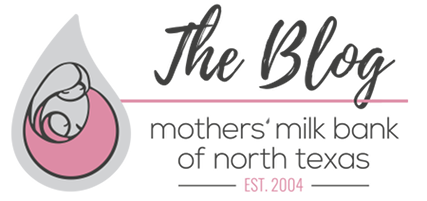"MORE." It's one four-letter word with a good reputation most of the time. Often associated with improvement, accomplishment, going further and going farther, some will argue that more isn't always better. However, for Mothers' Milk Bank of North Texas, 2015 was a wonderful year of more.
 We approved 778 donors. That's over 100 more moms than in 2014!
We approved 778 donors. That's over 100 more moms than in 2014!
Reaching potential donors involves a variety of communication platforms including valuable social media messages and effective education materials. Young mothers are fans of Facebook, Instagram and Twitter. What's a better way to find out about milk banking than from a trusted Facebook friend? We make it a priority to support our followers with all kinds of posts, from the latest in breastfeeding research to shout outs for favorite baby photos. Because mothers are breastfeeding for a limited time, it is essential to provide timely education about breastmilk donation. In 2015, we implemented Project MOMM (Make Our Mission Matter), a program designed to communicate effectively with potential donors by locating them in the community and educating them about milk banking and the easy donor approval process. Should a mother produce breastmilk in excess of her own baby’s needs, she will have learned before delivery that milk donation is a life-saving option. 
We dispensed 552,761 ounces. That's over 100,000 ounces more than in 2014!
Donor milk has become the standard of care for premature infants who have severe feeding problems, intestinal malformations and life threatening complications such as necrotizing enterocolitis (NEC). MMBNT currently dispenses 80% of donor milk by physician prescription to 114 hospital NICUs, and 20% by prescription to medically fragile babies at home. In February 2012, the American Academy of Pediatrics published an updated statement regarding breastfeeding and the use of human milk. The statement notes that hospitals and physicians should recommend donated human milk if a mother’s own breastmilk is not available, resulting in a rapid increase in the utilization of donor human milk among NICUs. Meeting the increased demand for safe donor milk is our daily mission. Here's to helping more premature and sick babies in 2016.
